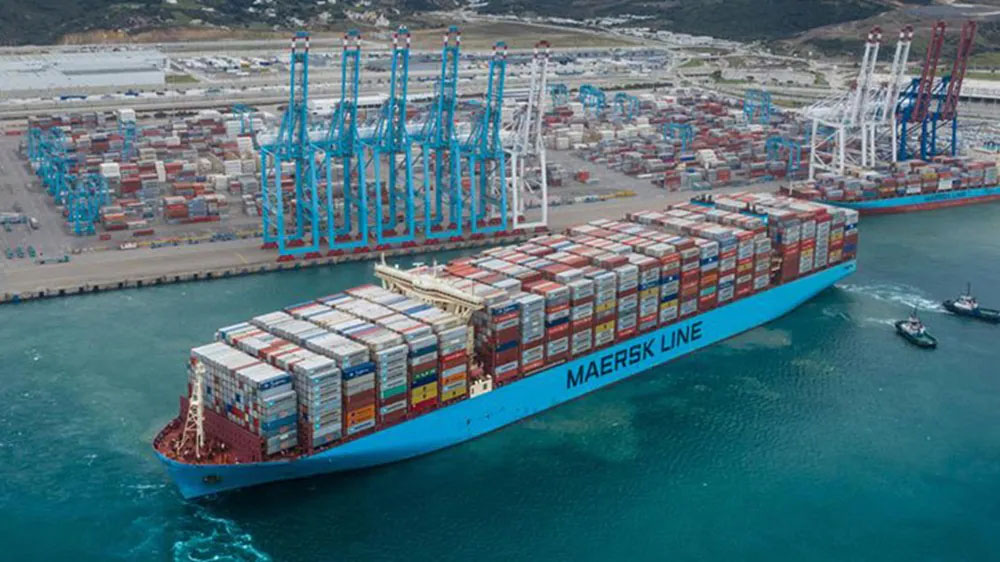
Danish shipping giant Maersk has revised its 2024 financial guidance upwards, driven by sustained strong demand in the container market and ongoing disruptions in the Red Sea. The carrier is now forecasting an underlying EBITDA of $7-9 billion and EBIT of $1-3 billion, a significant increase from previous estimates of $4-6 billion and $-2-0 billion, respectively. Additionally, Maersk anticipates a free cash flow of at least $1 billion, up from the previous projection of at least $-2 billion.
Continued Market Disruptions
The persistent crisis in the Red Sea has exacerbated port congestion, particularly in Asia and the Middle East, leading to further increases in container freight rates. Maersk’s official release notes that this escalating situation is expected to bolster the company’s financial performance in the latter half of 2024.
“This development is gradually building up and is expected to contribute to a stronger financial performance in the second half of 2024,” the release states.
In the first quarter of 2024, Maersk reported a decline in EBITDA from $3.4 billion in Q1 2023 to $1.5 billion. EBIT also saw a significant decrease, falling to $117 million from $2.3 billion in the same period last year. Revenue dropped to $12.4 billion, compared to $14.2 billion in Q1 2023.
Vincent Clerc on Market Dynamics
Maersk CEO Vincent Clerc attributes the company’s revised outlook to the recent phase of market disruptions caused by the ongoing Red Sea crisis and its impact on global supply chains. “In the past month, the container transport market has entered a new phase driven by the disruptions from the ongoing crisis in the Red Sea and the ripple effects on global supply chains,” Clerc explains.
Clerc highlights that while the demand for container transport remains robust, the supply side has been adversely affected by missed sailings, longer routes, equipment shortages, and delays. These factors have led to increased congestion at key ports in Asia and the Middle East. “This demand and supply imbalance has had an immediate and profound impact on freight rates,” Clerc adds.
After a stable first quarter, freight rates saw a marked increase during April and May across various regions. The ongoing threats to commercial vessels in the Red Sea and the growing supply chain bottlenecks indicate that these disruptions are unlikely to subside soon. More capacity than initially expected will be required to resolve these issues and stabilize the global supply chain, prompting Maersk to reassess and upgrade its financial outlook for the remainder of the year.
Looking Ahead
Maersk is set to publish its Q2 results on August 7, 2024. The company acknowledges that trading conditions remain highly volatile due to the unpredictable situation in the Red Sea and uncertainties surrounding future supply and demand dynamics.
As the industry navigates these challenges, Maersk’s proactive approach to adjusting its financial guidance reflects a strategic response to the evolving market conditions. The coming months will be crucial in determining the extent to which these disruptions impact the broader shipping industry and global trade.
Source: www.maersk.com
